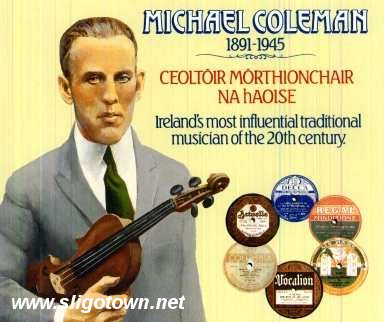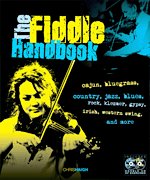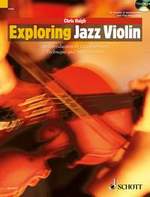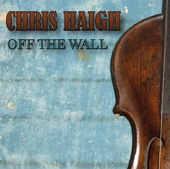
MENU TO FIDDLE STYLES:
MICHAEL COLEMAN
It would be no exaggeration to compare the recordings of Michael Coleman with the Beatles’ Sergeant Pepper or Miles Davis’ Kind of Blue, such were the extent of their influence on a generation of Irish musicians.
Traditional music in Ireland was at a low ebb in the 1920, as a result of emigration, and the continuing disapproval and harassment from the Church, which would eventually succeed in almost banning the unlicensed playing of live music. Coleman was born in 1891 in the district of Killavil in County Sligo. It was a hotbed of traditional music, with a fiddle in almost every house, and several master fiddlers within easy walking distance of the Coleman’s. Indeed, Michael’s elder brother Jim was said to be one of the finest fiddlers in the area, though he never recorded or pursued a musical career. Michael soaked up the repertoire and style of the local musicians, learning not only from fiddlers, but also from pipers; as a child he followed around after Johnny Gorman (“Jack the Piper”). At the age of 23. Like many others of his generation, Michael Coleman sailed to America, taking up lodgings with an aunt in Massachusetts. He soon found employment playing in traveling vaudeville shows; part of his act involved dancing to his own fiddle playing. In Vaudeville showmanship and flashy technique were at a premium, and Coleman had them in spades.
In 1921 was offered his first recording session. The pioneering recording companies had already grasped the potential of selling specialized ethnic music to homesick immigrant communities, but up until this time most of the recorded Irish music had been a poor imitation of the real thing. Coleman was among the first skilled Irish fiddlers to lay down some proper dance tunes. The limitations of the studio are all too obvious on the surviving recordings. The earliest method required the needle to cut straight into a rotating wax cylinder, and an instrument such as the fiddle lacked the required volume to record clearly. Coleman, much to his disgust, was required to use a Stroh Fiddle- lacking a proper body, but having instead a metal horn to amplify the sound. The tone was penetrating but nasal, on some tracks sounding more like a flute than a violin. An additional problem was that the record producers could not conceive of the fiddle playing solo, and so a piano accompanist was provided. Generations of refinement and excellence of the fiddle tradition came up against a reluctant ten minutes of rehearsal from the ham-fisted pianist, who had little or no understanding of the music they were required to play. On the Reel Farrell O’Gara, for example, you can clearly hear the pianist hitting a wrong chord in anticipation of the key change which follows, whilst on many tunes the fiddle takes off like a horse at the starting gun, while the pianist is left struggling at the starting line. The Frieze Britches is particularly shambolic. There is a maximum recording time of around three and a half minutes per side, and you can almost see the engineer frantically waving his hands and mouthing “CUT!” as they approach the deadline; many tunes end prematurely half way through a section; Coleman sometimes used an “emergency stop” tactic- a closing three note cadence wherever they got to when the music stopped. Not to mention the sound of frying rashers which all but drown out the music on some of the recordings.
So having so generously listed all the failings of these recordings, how are we to explain the reverence with which they were, and still are, treated? What shines through it all is that Coleman was an outstanding player, full of boundless energy and inventiveness. One of the key differences between a run-of the mill session player and a soloist is that the latter will decorate, embellish and vary his performance in a different way every time he goes round the tune. Coleman is at his most flamboyant on reels and hornpipes, throwing in bowed triplets ( a strong feature of the Sligo style) and cascading triplet runs. His reels are all played with a strong swing, and even his polkas are swung. It is difficult to say how much of the influence of his recordings was simply that they were among the first of their type to be heard, and how much is down to the quality of his playing. Certainly the effect in Ireland was dramatic, and in no time at all he was the one that virtually every fiddler wanted to imitate. To quote one of Coleman’s relatives, Johnny Giblin: “He immortalized tunes that weren’t worth playing. Take for instance The Boys of the Lough. I remember people playing that and it was a very ordinary, plain tune. But Coleman made it a great tune. He set a headline for tunes so that no one could ever go back to the originals”
It is often stated that, such was the extent to which he was copied and imitated, that Coleman destroyed the regional styles of Ireland; up until that point there had been fairly distinct geographical differences throughout Ireland in repertoire, bowing and ornamentation. As soon as everyone started copying Coleman’s Sligo style, regional variation was on an obvious downward spiral. However, you could equally well argue that the music might well have perished from lack of interest had he not galvanized fiddlers in the way he did, so that the erosion of regional differences would have been an academic point anyway. Apart from a five-year break during the Depression, he recorded consistently up to his death in 1945, though the peak of his career was probably in 1927, when he was paid $500 for recording the reel Lord McDonald. A labourer at the time could expect to earn $30 a week though, like most other musicians at the time, Coleman could have made far more from his work had he negotiated a percentage of royalties rather than taking the one-off payment. To listen to his recordings today, fortunately we don’t have to search the antique shops for dusty old 78’s. There is an excellent double CD collection; “Michael Coleman 1891-1945” (Gael Linn 1991), complete with an 80 page booklet by Harry Bradshaw. Bradshaw has exhaustively researched the life and work of Coleman, interviewing 34 of his friends and relatives to gain an insight into how he was regarded by his peers. The collection includes 48 sets of tunes, along with a complete discography. Of the tune sets, 23 are reels, 12 are jigs, 5 are hornpipes, along with a scattering of barndances, set dances, polkas, slip jigs and schottisches; we can take this as being fairly representative of the typical Sligo repertoire of the time. Most are recorded with piano accompaniment, though a few have guitar (which is far less intrusive), and some also have flute or second fiddle.
The tunes Coleman recorded have become the core of the basic repertoire of Irish traditional music, and sets are often still played at sessions in the same order as he recorded them. Coleman was not unique in his popularization of the Sligo style; the fiddlers James Morrison (1893-1947), Paddy Killoran (1904-1965) and Paddy Sweeney (1894-1974) were all contemporaries of his who emigrated from Sligo and who, through recording, performing or teaching were deeply influential. However, it was Coleman to whom everyone looked as the flag waver for Sligo fiddle and traditional Irish fiddle in general. To quote Bradshaw, in conclusion, Coleman was.. “without a doubt, the most outstanding and influential musician in the Irish tradition in the 20thC”




